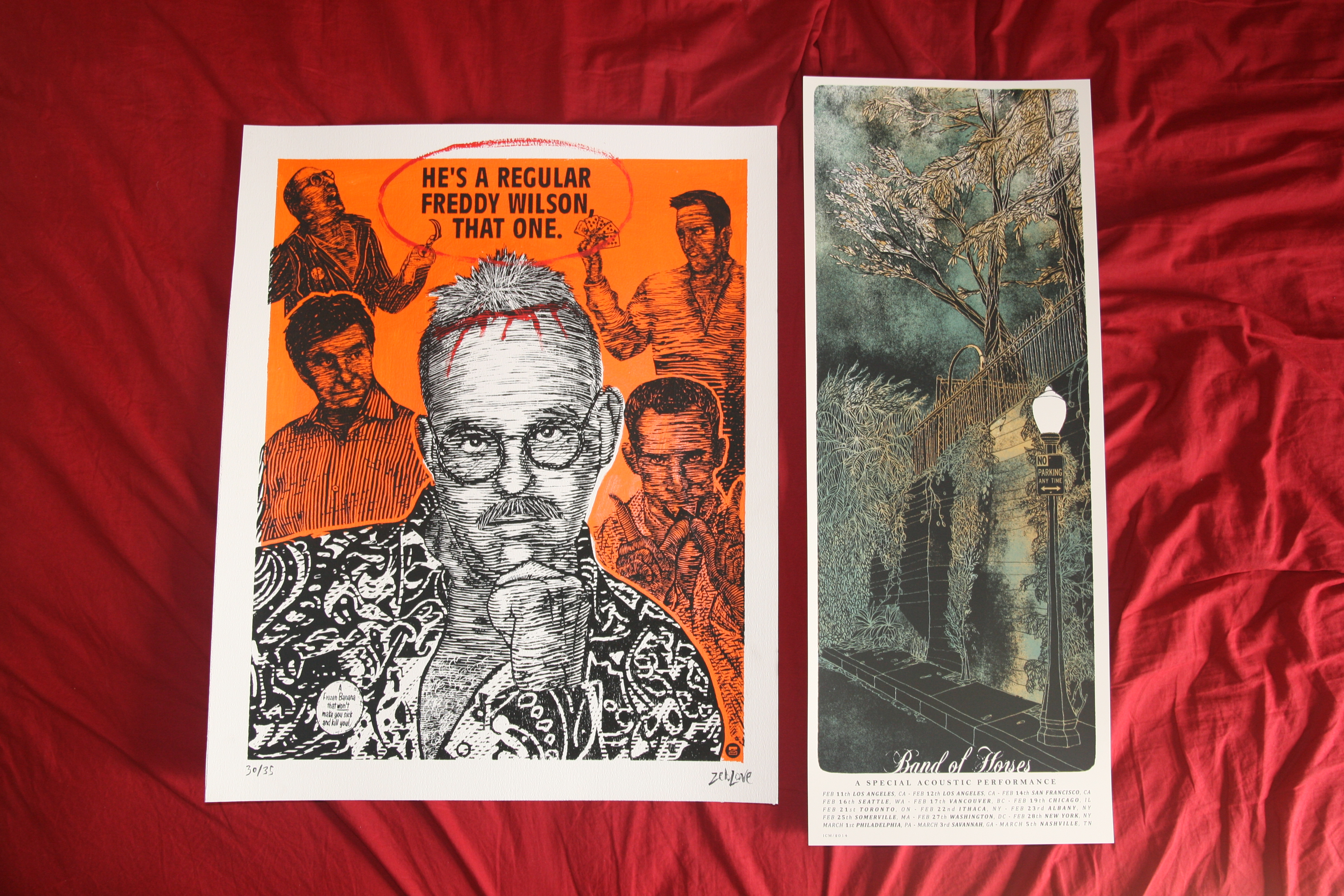When handling your posters and prints for storage preparation, the first step is to make sure you always have clean, dry skin, so no dirt or oil from your hands can damage your collection. Never bend or fold your collectable pieces, as creases are nearly impossible to remove and can permanently damage your item.
If your poster/print is clean and straight, then it’s ready to be framed. If the poster/print you acquired is rolled up or slightly warped, below are some helpful ways to flatten and straighten it out.
- Take it to a professional framing store where they can smooth and flatten the poster/print for you at a cost. This will save you personal time, and help avoid any permanent damages being made from inexperience.
- If you decide to flatten your poster/print on your own, here is a step by step process to aid you.
- Roll posters/prints the opposite direction from the way that they’re curled. Start loose and progressively tighten as you go. Sometimes this is enough to flatten it, but often requires the next steps.
- Put the poster/print through an empty paper towel or toilet paper roll. This will keep it from unrolling, while not putting to much pressure on the item, like a rubber band can.
- Let sit for several hours
- Unroll the item, and then place it flat on a clean, hard, smooth surface. Make sure the artwork is facing up.
- Use paper weights or heavy, flat objects on the corners of the poster/print to continue flattening even more. Don’t put heavy weights on the poster/print if it is on a soft or malleable surface. The weight can crinkle and damage the poster.
- Remove the weights and check to see if the item has been straightened. If it’s still slightly warped, repeat the process, letting the item sit for longer.
If your poster/print is nice and straight, but you don’t plan on framing it right away, it is important to properly prepare it for storage.
The terms ‘archival quality’ and ‘acid free’ are used to designate materials or products that are permanent, durable, and/or chemically stable and used for long-term preservation and conservation.
Listed below are bags (sleeves), boards, and archival paper; items that will help in the preservation of your poster/print, until it’s ready to be displayed.
Bags
In most cases, mylar sleeves are considered the best bag for storage purposes, but since most poster/print preservation is for a limited time, since they’re supposed to be displayed, non-archival sleeves will work just fine. If you plan on storing your poster/print away for more than 5 years, mylar sleeves are highly recommended.
- Polyethylene – a soft, clear material thats able to breath and let moisture escape. It has some elasticity which allows for it to conform easier for a tighter fit. Has good contact clarity.
- Polypropylene – is a very clear, high sheen, crisp material. Often uses bi-oriented polypro, which stretches the material in both directions when being produced, so that it won’t wrinkle or warp over time. Less clarity.
- Mylar (Archival Polyester) – uses material of the highest clarity. Mylar will not discolor, damage, or adhere to items placed inside it. It is a sturdy material that displays beautifully, gives extra support to fragile items, and timelessly protects your collection.
Boards
Backing boards are important for support and will prevent corner/edge wear. Basic and acid-free boards will work just fine for short term poster/print storage, but for long term storage over 5 years, museum grade boards that have a buffer throughout, and are acid-free, are recommended.
- Corrugated Boards – are corrugated fiberboard, also known as cardboard. White on both sides. For short term storage.
- Standard Acid-Free Boards – are acid-free all the way through. White on both sides. For short term to intermediate storage.
- Museum Grade Archival Boards – are acid-free, lignin-free, and contaminant-free. There are three varieties; Super Acid-Free, Foam Board, and Archival Corrugated. Meets Library of Congress Archival Standards for long-term to indefinite storage.
Archival/Micro Chamber Paper
Archival Paper is a very thin paper that is placed in front and behind your poster/print while it’s being stored away, to help remove and neutralize acids, pollutants and by-products of deterioration. It is nearly transparent, interleaving paper that contains dispersed molecular traps that stop acid migration from damaging your art. It helps eliminate yellowing that can occur, as well as odors such as smoke, mold and mildew. Insert one or two sheets to help conserve your collection.
